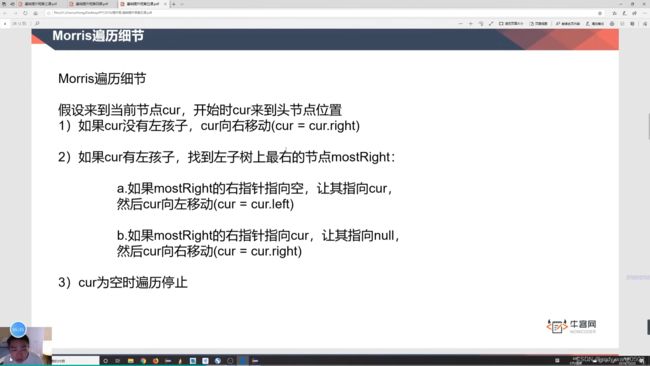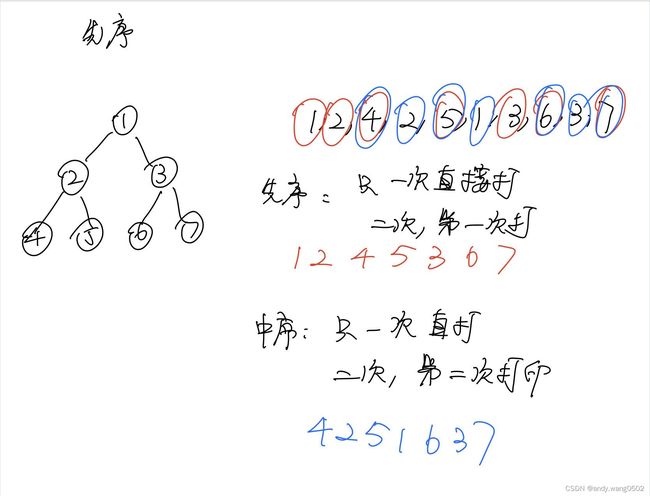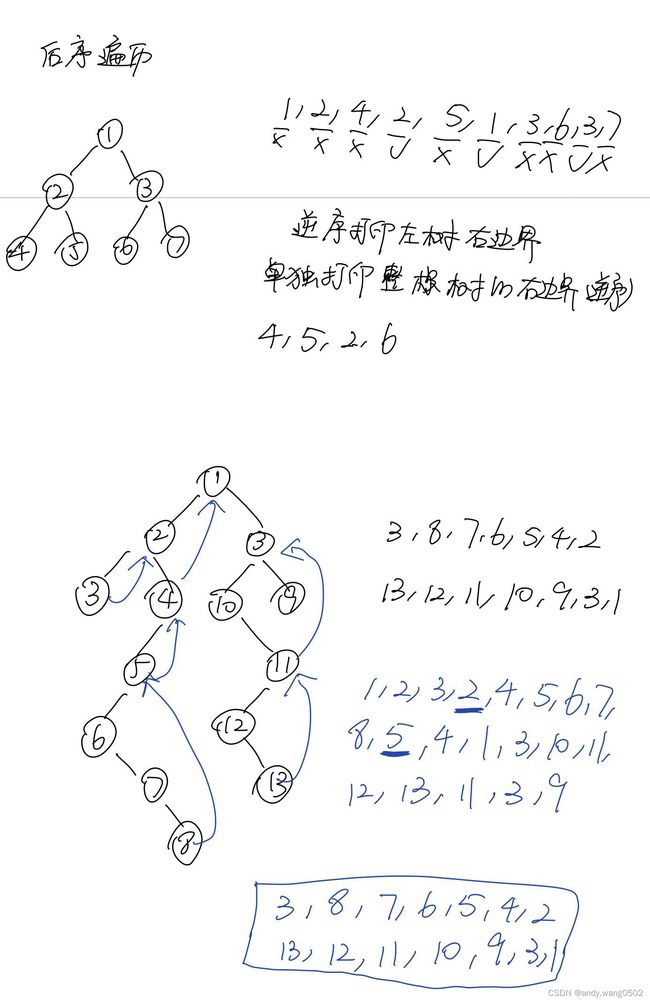B站左程云算法视频基础提升04
树形DP
使用前提:如果题目求解目标是S规则,则求解流程可以定成以每一个节点为头结点的子树在S规则下的每一个答案,并且最终答案一定在其中。
二叉树的节点间的最大距离:
设以X为头结点的整棵树的最大距离分两种情况讨论:1)X不参与,要求返回的信息是左子树的最大距离maxdistance和右子树的最大距离maxdistance;2)X参与,左高度height+1+右高度height
返回值结构:maxdistance、height
maxdistance在左子树的最大距离maxdistance和右子树的最大距离maxdistance和左高度height+1+右高度height中取max
public static int maxDistance(Node head){
return process(head)maxDistance;
}
public static class Info{
public int maxDistance;
public int height;
public Info(int dis, int h){
maxDistance = dis;
height = h;
}
}
//返回以x为头的整棵树的两个信息
public static Info process(Node x){
if(x == null){
return new Info(0,0);
}
Info leftInfo = process(x.left);
Info rightInfo = process(x.right);
//Info
int p1 = leftInfo.maxDistance;
int p2 = rightInfo.maxDistance;
int p3 = leftInfo.height + 1 + rightInfo.height;
int maxDistance = Math.max(p3, Math.max(p1,p2));
int height = math.max(leftInfo.hight, rightInfo.height) + 1;
return new Info(maxDistance, height);
}套路:
一)以某节点X为节点的子树中,分析可能性(以X左、X右和X整棵树考虑);
二)由一)列出所有的信息
三)合并二)的信息,对左和右提出同样的要求,并写出信息结构
四)设计递归函数,是以X为头的答案
basecase
默认得到在左树和右树所有信息
所有可能性整合
返回三)的信息结构
派对的最大快乐值(leetcode 337)
X参与:X乐+A不来的整棵树的最大快乐值+B不来的整棵树的最大快乐值+C不来的整棵树的最大快乐值
X不参与:0+max{A不来的整棵树的最大快乐值,A来的整棵树的最大快乐值}+max{B来的整棵树的最大快乐值,B来的整棵树的最大快乐值}+...
public static class Info{
public int laiMaxHappy;
public int buMaxHappy;
public Info(int lai, int bu){
laiMaxHappy = lai;
buMaxHappy = bu;
}
}
public static Info process(Employee x){
if(x.nexts.isEmpty()){//x是基层员工
return new Info(x.happy,0);
}
int lai = x.happy;
int bu = 0;
for(Employee next : x.nexts){
Info nextInfo = process(next);
lai += nextInfo.buMaxHappy;
bu += Math.max(nextInfo.laiMaxHappy, nextInfo.buMaxHappy);
}
return new Info(lai,bu);
}Morris遍历(通过来回标记遍历整棵树)
一种遍历二叉树的方式 时间复杂度o(N) 空间复杂度o(1)
利用原树中大量空闲指针的方式,达到节省空间的目的
无左树,只有一次到达自己
有左树,根据左树的最右节点指向判断第几次达到自己
public static void morris(Node head){
if(head == null){
return;
}
Node cur = head;
Node mostRight = null;
while(cur != null){//过流程
mostRight = cur.left;//mostRight是cur左孩子
if(mostRight != null){//有左子树
while(mostRight.right != null && mostRight.right != cur){
mostRight = mostRight.right;
}
//mostRight变成了cur左子树上,最右的节点
if(mostRight.right == null){//第一次来到cur
mostRight.right = cur;
cur =cur.left;
continue;
}else{ //mostRight.right = cur
mostRight.right = null;
}
}
cur = cur.right;
}
}所有节点遍历自己的左子树右边界,总代价O(N)
先序遍历和中序遍历
public static void morrisPre(Node head){
if(head == null){
return;
}
Node cur = head;
Node mostRight = null;
while(cur != null){//过流程
mostRight = cur.left;//mostRight是cur左孩子
if(mostRight != null){//有左子树
while(mostRight.right != null && mostRight.right != cur){
mostRight = mostRight.right;
}
//mostRight变成了cur左子树上,最右的节点
if(mostRight.right == null){//第一次来到cur
System.out.println(cur.value);
mostRight.right = cur;
cur =cur.left;
continue;
}else{ //mostRight.right = cur
mostRight.right = null;
}
}else{//没有左子树的情况
System.out.println(cur.value);
}
cur = cur.right;
}
}public static void morrisin(Node head){
if(head == null){
return;
}
Node cur = head;
Node mostRight = null;
while(cur != null){//过流程
mostRight = cur.left;//mostRight是cur左孩子
if(mostRight != null){//有左子树
while(mostRight.right != null && mostRight.right != cur){
mostRight = mostRight.right;
}
//mostRight变成了cur左子树上,最右的节点
if(mostRight.right == null){//第一次来到cur
mostRight.right = cur;
cur =cur.left;
continue;
}else{ //mostRight.right = cur
mostRight.right = null;
}
}
System.out.println(cur.value);
cur = cur.right;
}
}后序遍历
//以X为头的树,逆序打印
public static void printEdge(Node X){
Node tail = reverseEdge(X);
Node cur = tail;
while(cur != null){
System.out.print(cur.value + " ");
cur = cur.right;
}
reverseEdge(tail);
}
public static Node reverseEdge(Node from) {
Node pre = null;
Node next = null;
while (from != null){
next = from.right;
from.right = pre;
pre = from;
from = next;
}
return pre;
}
public static void morrisPos(Node head){
if(head == null){
return;
}
Node cur = head;
Node mostRight = null;
while(cur != null){//过流程
mostRight = cur.left;//mostRight是cur左孩子
if(mostRight != null){//有左子树
while(mostRight.right != null && mostRight.right != cur){
mostRight = mostRight.right;
}
//mostRight变成了cur左子树上,最右的节点
if(mostRight.right == null){//第一次来到cur
mostRight.right = cur;
cur =cur.left;
continue;
}else{ //mostRight.right = cur
mostRight.right = null;
printEdge(cur.left);
}
}
cur = cur.right;
}
printEdge(head);
System.out.println();
}
判断一棵树是否是搜索二叉树?
原先的做法:中序遍历,看是否升序
现在:
public static void isBst(Node head){
if(head == null){
return true;
}
Node cur = head;
Node mostRight = null;
int preValue = Integer.MIN_VALUE;
while(cur != null){//过流程
mostRight = cur.left;//mostRight是cur左孩子
if(mostRight != null){//有左子树
while(mostRight.right != null && mostRight.right != cur){
mostRight = mostRight.right;
}
//mostRight变成了cur左子树上,最右的节点
if(mostRight.right == null){//第一次来到cur
mostRight.right = cur;
cur =cur.left;
continue;
}else{ //mostRight.right = cur
mostRight.right = null;
}
}
if(cur.value <= preValue){
return false;
}
preValue = cur.value;
cur = cur.right;
}
return true;
}二叉树题目的最优解:如果要用第三次信息的强整合要用递归套路,如果不需要第三次信息的强整合morris遍历是最优解。
大数据题目:位图解决某一范围上数字的出现情况,并可以节省大量空间
32位无符号整数的范围是0~4,294,967,295,现在有一个正好包含40亿个无符号整数的文件,所以在整个范围中必然存在没出现过的数,可以使用最多1GB的内存,怎么找到所有未出现过的数?
进阶:内存限制为3KB,但是只用找到一个没出现过的数即可
range:0~![]() -1
-1
count:40亿
![]() /8=500M
/8=500M
一个bit表现数出现过没有。
进阶:所有的内存生成一个无符号整性数组 int[],3KB/4 =750 接近512,申请一个长度512的数组,把range分为长度为512的数组,一共![]() /512 = 8388608,0位置上的值表示0~8388607上的数出现的次数,依次类推,等量的512份;一定存在某范围上的数不够8388608个,找到不够的区间,在该范围继续分成512份,继续过四十亿个数,还是有不够的,周而复始,能找到缺的数字
/512 = 8388608,0位置上的值表示0~8388607上的数出现的次数,依次类推,等量的512份;一定存在某范围上的数不够8388608个,找到不够的区间,在该范围继续分成512份,继续过四十亿个数,还是有不够的,周而复始,能找到缺的数字
比如1,1/8388608 = 0,所以arr[0]++
利用词频统计一定不够来实现定位
(时间换空间)
假设只能申请有限几个变量,怎么确定没出现过的数字:
0~![]() -1二分 左侧和右侧一定有一个不满,继续二分,能找到缺的数字,最多32次
-1二分 左侧和右侧一定有一个不满,继续二分,能找到缺的数字,最多32次



